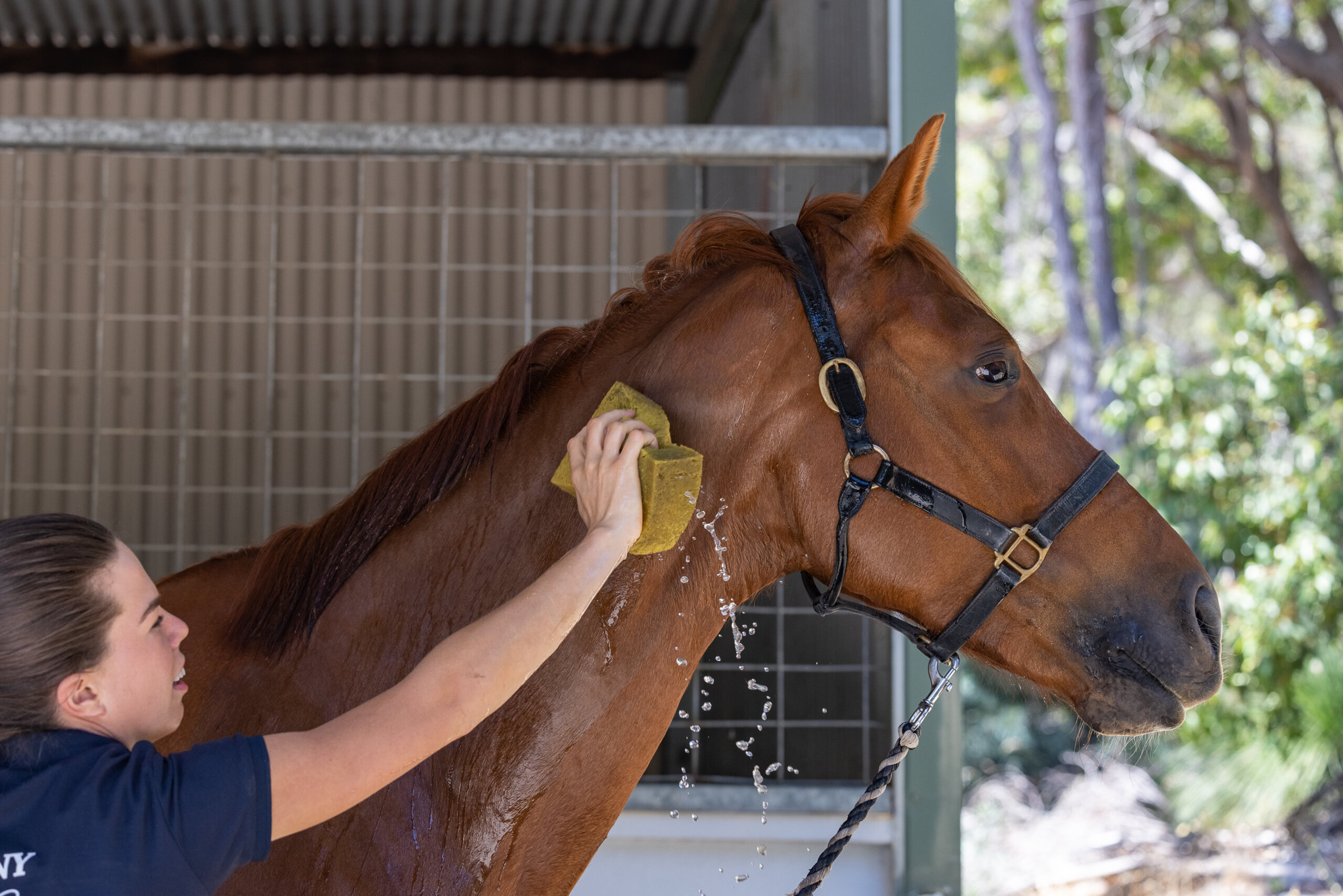Cooling Horses after Exercise

As the weather heats up, cooling horses down after exercise becomes an important management tool, especially during summer competitions. There are many methods for cooling, but what affects horse temperature and what are the best ways to lower it?
Muscle temperature may be higher than we think
Rectal temperature is typically used to measure body temperature in horses. Recently, percutaneous thermal sensing microchips (PTSM) have been utilised by researchers to measure muscle temperature. Similar to an identification microchip, PTSM can be inserted into the muscle belly in the middle gluteal and pectoral muscles. In a study at KER, post-exercise muscle temperatures were compared with post-exercise rectal temperatures for a period of 60 minutes. Interestingly, on completion of the same standardised exercise test, rectal temperature was lower than muscle temperature. Immediate post-exercise muscle temperature recovery was shortened by hosing, however, rectal temperature recovery time appeared unaffected by hosing. This suggests that muscle recovery may not be as accurately measured by rectal temperature as we think.
Which type of cooling method is better?
Typically, hosing down after exercise is considered effective cooling. However, there are some instances where running water and a hose are not always available. Or, if they are available, there is sometimes a queue! To determine how effective alternative cooling methods are, post-exercise muscle temperature was recorded for horses receiving either a hose down, sponge bath, or hand walking. Heart rate, respiratory rate and muscle temperature were recorded. Both sponging and hosing were effective in reducing muscle temperature recovery, compared to hand walking alone. Respiratory rate recovered to pre-exercise levels by 5 mins, 10 mins, and 20 mins post-exercise for hosing, sponging and walking respectively. Heart rate recovered within 15 minutes regardless of cooling method, however, walking had a higher overall heart rate. This study suggests that sponging is also an effective cooling method. It should be noted that the sponge bath used liberal amounts of water over the horse’s entire body, so smaller amounts of water applied to isolated areas of the body may not offer the same cooling effect.
Environmental factors to consider
Whilst environmental temperature obviously affects post-exercise body temperature and cooling rate, humidity has a greater influence on cooling. Continual hosing of horses for 5 minutes post-exercise can improve cooling response in humid conditions. Several studies have shown that removing water with a sweat scraper does not improve cooling and can reduce the cooling effect of water application.
Exercise recovery is also supported by diet and nutrition. Providing horses with a fibre-based feed including lucerne chaff and soaked AllFibre pellets is a good way to replenish fluid and electrolytes in the hours after exercise. A daily complete feed that contains optimum levels of antioxidants, such as vitamin E and selenium, is important to reduce oxidative stress and assist muscle recovery. All Pegasus feeds contain natural, bioavailable vitamin E, and selenium, along with electrolytes and bioavailable calcium.
For more information about feeding plans to support your horse’s exercise regime, contact our Equine Nutrition Advisor, Michelle Meylan.


